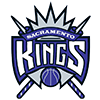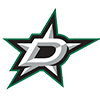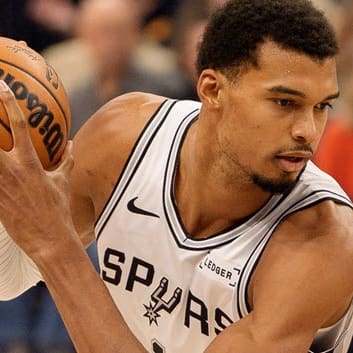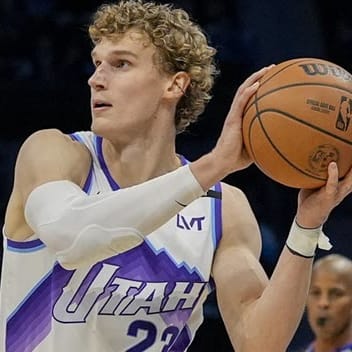By the end of this week, every team will have completed a third of their schedule. With a sizable chunk of the season past, let's look at some of the league-wide trends this season, and look for ways to use them in fantasy.
Observation Set One – Anti-Hack-a-Shaq might be working
One of most anticipated rule changes this season was an adjustment to the so-called "Hack-a-Shaq" rule. The shift was designed to try to limit the frequency with which dreadful free-throw shooters would get fouled away from the ball, slowing the game and subjecting viewers to moments like this.
There is some evidence the rule is working. The league's holy trinity of pathetic free-throw shooters – DeAndre Jordan, Dwight Howard and Andre Drummond – are attempting a combined average of 4.9 free throws per game, down from 7.3 per game last season. Although some other very bad free-throw shooters, such as Hassan Whiteside, have seen increases in their attempts, those increases have been smaller and mostly have accompanied increased roles on offense. League-wide, free-throw attempts are down slightly, and free-throw percentages are up.
Fantasy Impact: For several years, the worst free-throw shooters were much more harmful than the best free-throw shooters were helpful. It used to take two elites to cancel the effects of the worst free-throw shooters – a nearly-impossible task, since the top four free-throw shooters were first-round-pick-worthy talents. This calculus is now upended. Now, the negative impact of Drummond or Howard can be mitigated
By the end of this week, every team will have completed a third of their schedule. With a sizable chunk of the season past, let's look at some of the league-wide trends this season, and look for ways to use them in fantasy.
Observation Set One – Anti-Hack-a-Shaq might be working
One of most anticipated rule changes this season was an adjustment to the so-called "Hack-a-Shaq" rule. The shift was designed to try to limit the frequency with which dreadful free-throw shooters would get fouled away from the ball, slowing the game and subjecting viewers to moments like this.
There is some evidence the rule is working. The league's holy trinity of pathetic free-throw shooters – DeAndre Jordan, Dwight Howard and Andre Drummond – are attempting a combined average of 4.9 free throws per game, down from 7.3 per game last season. Although some other very bad free-throw shooters, such as Hassan Whiteside, have seen increases in their attempts, those increases have been smaller and mostly have accompanied increased roles on offense. League-wide, free-throw attempts are down slightly, and free-throw percentages are up.
Fantasy Impact: For several years, the worst free-throw shooters were much more harmful than the best free-throw shooters were helpful. It used to take two elites to cancel the effects of the worst free-throw shooters – a nearly-impossible task, since the top four free-throw shooters were first-round-pick-worthy talents. This calculus is now upended. Now, the negative impact of Drummond or Howard can be mitigated by the combination of Gordon Hayward and Lou Williams. All of the other terrible free-throw shooters – Jordan, Hassan Whiteside, Clint Capela, etc – can be canceled by just one elite shooter. This significantly increases the trade value of all of the awful free-throw shooters, especially in head-to-head leagues.
Observation Set Two – Scoring Shifts
Offense is up
If you thought scores seemed high this season, you are right. Teams are playing faster, and offenses are playing better. League-wide, per-possession scoring is up almost one point per 100 possessions. Teams are scoring an extra 1.6 points per game. That may sound like a small difference, but with such large sample sizes – 774 games this season, 2,460 last season – it is actually very meaningful. Already teams have scored 120 points in a game 90 times. At this pace, the league should see 290 such games – a staggering increase over last season's 190. We are on pace for 52 games where teams score at least 130 points, up from only 36 last season.
Yet shooting efficiency is unchanged
Despite the increase in scoring, shooting percentages have remained effectively flat. The league-wide field-goal percentage is 45.02 this season, barely changed from last year's 45.22. The change in three-point shooting is even smaller – this season's average is 35.29 percent, virtually identical to last season's 35.28.
Where are the extra points coming from?
League-wide pace has increased this season, but that doesn't explain the increase in points-per-possession. Faster pace cannot explain an increase in points per possession – it can only explain an increase in raw totals.
The increase comes almost entirely from a shift in the kinds of shots teams are taking. Although three-point efficiency is flat, a larger portion of teams' shot attempts are from behind the arc — 31 percent of all shot attempts are threes this season, up from 28 percent last season. It works out to teams attempting 2.4 more threes per game. With the increased attempts, teams are making an extra 0.9 threes per game.
Fantasy Impact: The value of scoring big men goes up, since fewer shots are being attempted inside the arc, where bigs make their living. If you are a fantasy veteran, it also means that the number of threes and the quantity of points required to win has increased from previous seasons. It's OK to use last season's data as a guide to set up your goals, but know that this season will probably exceed those goals.
On that topic, I should remind fantasy gamers of a trend I identified earlier this season, that as the season moves along, offenses tend to improve. Therefore, if you are using the first third of the season to establish benchmarks for the rest of the season, remember to expect your predictions to be slightly below the actual final totals.
Observation Set Three – Scoring increases only at the top
While the league averages have increased, not all teams have been impacted equally. The league's worst offenses, the bottom 10 teams, are actually scoring fewer points than they did last year. Among this group, points per possession has fallen from 1.009 to 1.003. Points per game has fallen slightly, from 99.0 to 98.9, despite a large increase in pace amongst this group. The NBA is on a pace to see an increase in games where one team scores less than 80 points. Those may look like small changes, but they go in the opposite direction of the league average. This means the increases described above are even more significant amongst the better offenses.
Fantasy Impact: This observation had the widest fantasy usefulness, since it impacts the waiver wire more than trade value. When combined with Set Two, above, the most important takeaway here is that it changes the way waiver prospects should be analyzed. A key factor in any waiver consideration is how much time a player will spend on the court – if a player can expect an increase in minutes, their fantasy value increases. However, with the gap growing between the high- and low-powered offenses, that opportunity becomes more or less valuable depending on the player's team. For example, a guard or wing expecting an increase in minutes on the Warriors, Rockets, or Blazers is now much more valuable than one expecting a comparable increase on the Magic, Heat or Grizzlies.









































